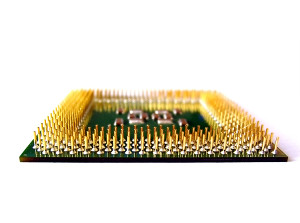 NEWS
NEWS
 NEWS
NEWS
 NEWS
NEWS
![]() Intel has revealed that its new server chips will be designed to address the growing needs of cloud services and high-performance computing (HPC) applications. These new Xeon server chips are not even on the schedule for release, but Intel says they will integrate a converged fabric controller and increase performance for data-intensive operations, such as analytics.
Intel has revealed that its new server chips will be designed to address the growing needs of cloud services and high-performance computing (HPC) applications. These new Xeon server chips are not even on the schedule for release, but Intel says they will integrate a converged fabric controller and increase performance for data-intensive operations, such as analytics.
The integrated fabric controller will afford servers with bandwidth of over 100 gigabytes per second, considerably faster than today’s I/O and network interfaces. It will also provide a wider pipe, making it easier to scale across distributed computing environments. Best of all, Intel promises all of these new features will be delivered on the transistor layer of the chip and will actually lower a data center’s overall power consumption.
Fabric is the way to go, according to Intel, as it enables the smooth traveling of data between servers, their processors, memory, and other components, while also saving energy. One might liken fabrics to extremely agile and flexible traffic directors. Despite their benefits, fabric controllers come at a cost, as they currently exist outside of the processors, requiring companies to invest in third-party Ethernet or PCI-Express technologies. Intel intends to eliminate that need by placing fabric directly on its future line of Xeon chips.
“That’s the path we’re on with fabrics. Integration is a must,” said Raj Hazra, vice president of the Intel Architecture Group.
Intel boosted its fabric controller technology through its acquisitions of companies like Fulcrum last year and assets from QLogic (InfiniBand) and Cray (interconnect) early this year.
AMD, Intel’s direct competitor, is also positioning itself to dive into the fabric arena with its acquisition of SeaMicro, a company that at one time developed microservers with Intel. AMD sells SeaMicro servers with technology called Freedom Fabric, and it stands to reason that the company may soon also integrate fabric onto its chips.
Support our mission to keep content open and free by engaging with theCUBE community. Join theCUBE’s Alumni Trust Network, where technology leaders connect, share intelligence and create opportunities.
Founded by tech visionaries John Furrier and Dave Vellante, SiliconANGLE Media has built a dynamic ecosystem of industry-leading digital media brands that reach 15+ million elite tech professionals. Our new proprietary theCUBE AI Video Cloud is breaking ground in audience interaction, leveraging theCUBEai.com neural network to help technology companies make data-driven decisions and stay at the forefront of industry conversations.